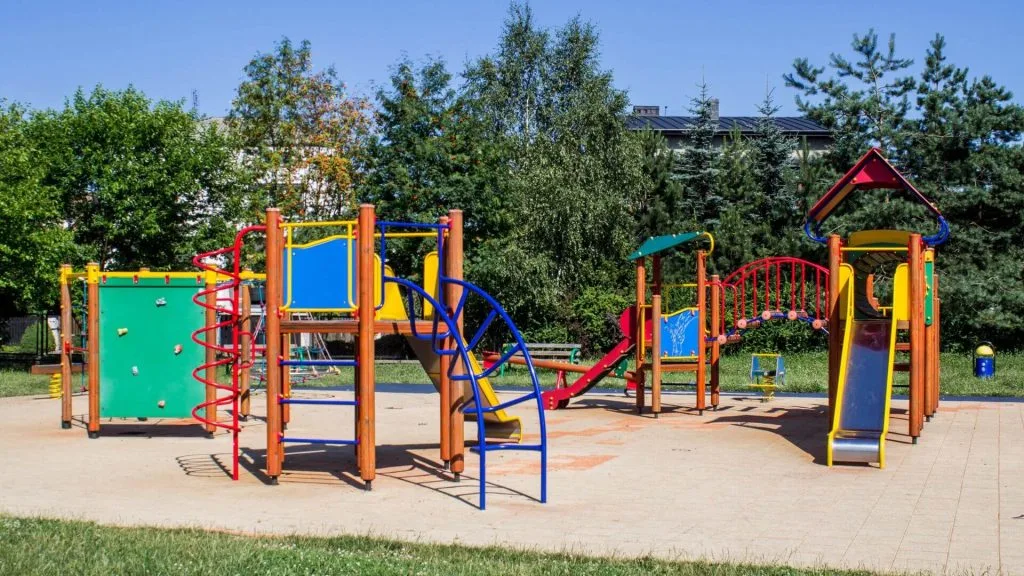Playgrounds are common places for children to explore, play with others, and develop physical skills. However, they can also pose certain safety risks if proper precautions are not taken. While children inevitably face injuries when playing, parents and caregivers can take preventative safety measures and help children avoid serious injuries which commonly occur on playgrounds.

Fall Injuries
Fall injuries on the playground are often caused by various factors such as lack of proper surfacing, inadequate maintenance of playground equipment, unsafe design, climbing too high, and insufficient adult supervision. Falls onto hard surfaces like concrete or asphalt can result in serious injuries, highlighting the importance of installing impact-absorbing surfaces such as rubber mulch or engineered wood fiber. Keeping playgrounds well maintained is also an essential way to identify and address hazards promptly and ensure the safety of children.
Experienced Louisville personal injury attorneys suggest playgrounds should be designed with appropriate safety features like guardrails and barriers to prevent falls from elevated structures. Adequate supervision by attentive adults helps prevent risky behaviors and enforces playground rules, reducing the likelihood of fall injuries.
Cuts and Bruises
Cuts and bruises on the playground are often caused by various factors such as collisions with other children, falls onto hard surfaces, sharp edges on playground equipment, or rough play. To prevent these injuries, it is essential to ensure the playground has proper surfacing, such as rubber mulch or engineered wood fiber, to cushion falls. Regular inspections and maintenance of playground equipment are crucial to identify and address any sharp edges or broken components that could cause cuts or bruises. Emphasizing the importance of playground safety such as playing gently, avoiding pushing or shoving, and using equipment appropriately, can help reduce the likelihood of accidents.
Strains and Sprains
Activities involving running, jumping, climbing, and playing sports can put stress on muscles and joints, increasing the risk of sprains and strains. To avoid these injuries, it’s essential to ensure that the playground has appropriate surfacing, such as rubber mulch or engineered wood fiber, to cushion falls and reduce impact. Enforcing rules against rough play and encouraging children to use playground equipment safely and responsibly can help minimize the risk of accidents. Providing proper supervision by attentive adults can also prevent risky behavior and intervene promptly in case of any accidents or falls.
Bone Fractures
Climbing structures, slides, and swings pose potential hazards if children fall from heights or land awkwardly. Additionally, running or playing sports on hard surfaces without proper padding or protection can increase the risk of fractures. To prevent these injuries, it is crucial to ensure that playgrounds have adequate impact-absorbing surfacing, such as rubber mulch or engineered wood fiber, to cushion falls. Supervision by adults can also help prevent risky behavior and intervene in case of accidents.
Head Injuries
Falls from swings, slides, or climbing structures are common causes of head injuries, especially if children land on their heads or sustain a blow to the head during a fall. Collisions with other children while running or playing games can also result in head injuries. To prevent these incidents, it is crucial to ensure that playgrounds have proper support for falls and reduce the impact on the head. Educating children about playground safety rules, including the importance of playing safely and avoiding running or pushing, can further reduce the risk of head injuries.
Entrapment
Entrapment injuries on the playground often occur when a child’s body or clothing becomes trapped in gaps or openings in playground equipment. These injuries can result from spaces between bars or railings, openings in climbing structures, or gaps in slides. Entrapment injuries can be particularly dangerous if a child’s head, neck, or limbs become trapped, leading to cuts, bruises, or more severe injuries.
To prevent entrapment injuries, playground equipment should be designed and constructed according to safety standards to minimize the risk of gaps or openings that could trap children. Adult supervision can also help prevent children from engaging in high risk activities or using equipment inappropriately. Informing children about safety measures on the playground, including the importance of avoiding climbing or crawling through small openings, can further reduce the risk of entrapment related injuries.

Jessi is the creative mind behind The Coffee Mom, a popular blog that combines parenting advice, travel tips, and a love for all things Disney. As a trusted Disney influencer and passionate storyteller, Jessi’s authentic insights and relatable content resonate with readers worldwide.
